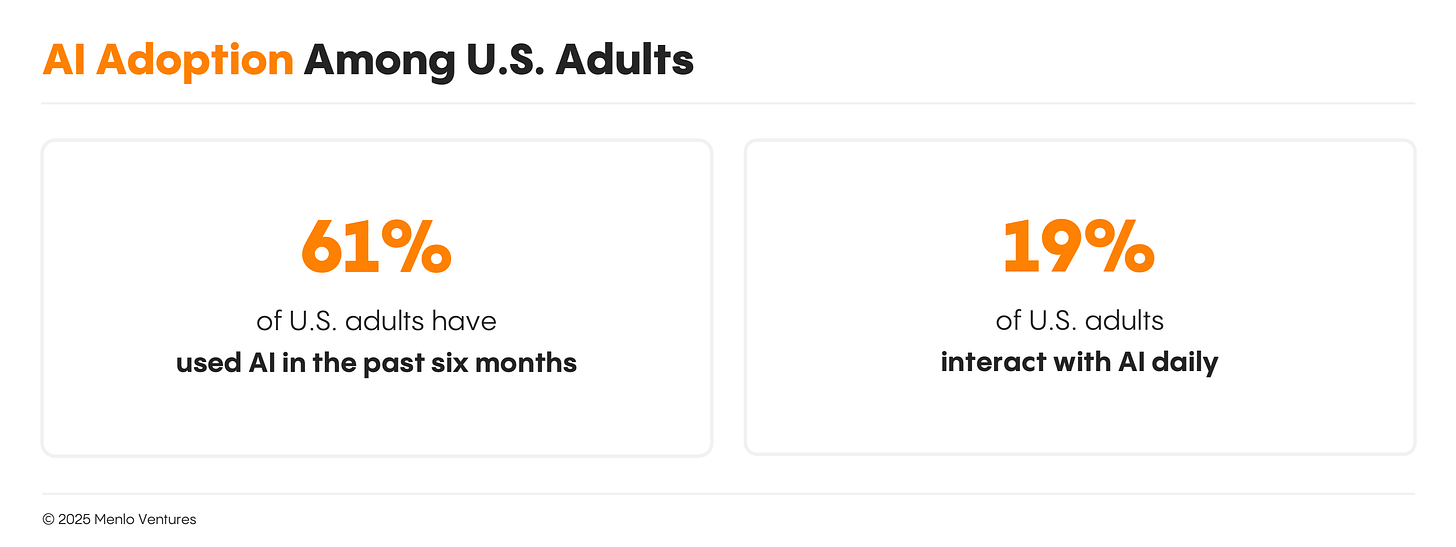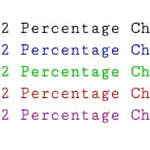(Explainer video credit: Google NotebookLM) ironic huh?
Hat tip to Muthu Raja
I love that Karen focuses on how AI tech bros are using the playbook of empires and Dune…eventually even Paul Atreides begins to believe the planted prophecy that the mother and The Bene Gesserit invented.
Karen Hao’s book is next on my to read list.
The source material interview is excellent. I rarely watch a 1 hour YouTube video, even before the newborn, but I made time and broke it up into three sittings.
My Opinion
A society that struggles to elect effective leaders and where 40 million citizens rely on SNAP for basic nourishment likely lacks the will to proactively address the growing ripples of AI until it is too late.
This man would be proud of Altman.
“Sam, I am your father!”
The AI Empire: A Synthesis of Karen Hao’s Analysis
Executive Summary
This document synthesizes the core arguments presented by author Karen Hao regarding the current state of the Artificial Intelligence industry. The central thesis is that major AI corporations—such as OpenAI, Microsoft, and Google—are operating as modern-day empires. This “Empire of AI” model is characterized by the large-scale extraction of resources like data and intellectual property, the exploitation of a global labor force, and the consolidation of immense economic and political power. These actions are often justified under a “civilizing mission” rhetoric, promising to solve humanity’s greatest problems like climate change and disease.
Hao argues that this trajectory is not inevitable. She advocates for an “AI accountability” approach, calling for democratic control and resistance at various points along the AI supply chain—from data collection and labor practices to the environmental impact of data centers. The document details the hidden costs and “sacrifice zones” of AI development, including the psychological toll on content moderators in the Global South and the environmental degradation of communities hosting massive data centers. Finally, it outlines an alternative path for AI development focused on task-specific, publicly beneficial applications rather than the current pursuit of capital-intensive, all-encompassing “everything machines.”
--------------------------------------------------------------------------------
1. Deconstructing the AI Industry’s Narrative
Karen Hao positions her analysis within an “AI accountability camp,” which seeks to scrutinize the power structures of the industry rather than simply accepting optimistic or skeptical viewpoints. This perspective is rooted in a critical examination of the industry’s foundational myths and marketing language.
The Malleable Definition of AI and AGI
Origins in Funding: The term “artificial intelligence” was coined in 1956 by Dartmouth assistant professor John McCarthy, who later admitted, “I invented this term because I needed money.” This highlights that the field’s branding was, from its inception, tied to securing financial resources.
The Flaw of Anthropomorphism: The original goal of recreating “human intelligence” is fundamentally problematic, as there is no scientific consensus on what constitutes human intelligence. This ambiguity allows companies to define success on their own terms, such as beating a human at chess, without addressing the full scope or significance of intelligence.
AGI as a Strategic Tool: Artificial General Intelligence (AGI) is not a fixed technical concept but a narrative tool that “shapeshifts based on what the companies need it to be.”
To Consumers: It is marketed as a convenient life-operating system, like in the movie Her.
To Regulators: It is presented as a mythical technology capable of solving humanity’s greatest challenges, thereby warding off regulation.
2. The “Empire of AI” Thesis
Hao’s central argument is that modern AI companies exhibit all the primary characteristics of historical colonial empires, using similar rhetoric to justify their expansion and consolidation of power.
Core Characteristics of an AI Empire
Characteristic
Historical Empire
Modern AI Empire (e.g., OpenAI)
Resource Seizure
Laying claim to foreign lands and natural resources.
Laying claim to public data and the intellectual property of artists, writers, and creators, redefining it as “fair use” for training models.
Labor Exploitation
Utilizing unpaid or underpaid labor in colonized territories.
1. Contracting low-wage workers in the Global South for psychologically damaging content moderation. 2. Developing labor-automating machines that erode worker bargaining power.
Inter-Empire Competition
Rivalries between competing powers (e.g., British vs. Dutch).
Aggressive competition where one company (e.g., OpenAI) frames itself as the “good guys” who must win to prevent “bad guys” from creating AGI.
“Civilizing Mission”
Bringing religion and “progress” to “heathen” populations.
Claiming to be on a mission to benefit all of humanity, solve major crises, and create abundance and prosperity.
The Imperial Mindset in Silicon Valley
The empire-building ethos is deeply embedded in Silicon Valley culture.
Leadership Ideology: Figures like Mark Zuckerberg and OpenAI CEO Sam Altman are described as being “obsessed with the emperors of old.” Altman has quoted Napoleon and Marcus Aurelius and openly stated his proudest achievement at Y Combinator was that he “built an empire.”
The Founder as Prophet: A 2013 quote from Sam Altman illustrates this mindset: “The most successful founders do not set out to create companies. They are on a mission to create something closer to a religion.” Hao compares this to the mythology in Dune, where a myth is handcrafted to secure power but eventually becomes a belief system for its creators.
Case Study: The Transformation of OpenAI
Hao, who was the first journalist to profile OpenAI in 2019, documented its shift from its founding principles to its current imperial form.
Original Mission: Founded as a nonprofit dedicated to transparency, collaboration, and advancing AI without commercial incentives.
The Pivot: By 2019, after receiving a billion-dollar investment from Microsoft and restructuring to include a for-profit arm, its internal operations began to contradict its public image.
From Collaboration to Competition: Publicly, OpenAI claimed to be collaborative; internally, the message was “we need to be number one otherwise our mission does not work.”
From Transparency to Secrecy: Publicly, the company promised to open-source everything; internally, it became highly secretive about its work.
Current Status: OpenAI is now described as “one of the most capitalistic companies in Silicon Valley,” having raised a $40 billion private tech investment fund.
3. The Hidden Supply Chain and its “Sacrifice Zones”
The production of AI is not an ethereal process; it relies on a vast, resource-intensive physical and human supply chain that creates “sacrifice zones” and harms invisible populations, mirroring the historical exploitation of colonies.
The Insatiable Need for Data
The data requirements for current large-scale AI models have “completely eclipsed” the amount used by social media companies. This has led to a desperate scramble for more data.
Example: A New York Times report revealed that Meta, despite possessing data from 4 billion users, was considering measures like buying the publisher Simon & Schuster or ignoring copyright and data privacy rules to acquire enough data to compete with OpenAI.
The Human Cost: Invisible Labor
AI companies rely on a global workforce to perform psychologically damaging tasks essential for commercializing their products.
Location: Kenya has long served as a “backstop for the internet of the global north” for content moderation.
The Work: OpenAI contracted Kenyan workers to filter toxic, abusive, sexist, and racist content—including child sexual abuse material—from its models. Workers were required to label this content in a detailed taxonomy.
The Impact: This work leads to severe psychological devastation. Hao profiles a Kenyan worker, Moat Okin, who was on the sexual content team. His personality changed so drastically that his wife, unaware of the nature of his work, left him, stating, “You’ve changed. I don’t know the man you are anymore.”
Environmental and Community Impact
AI development is physically intensive, requiring massive data centers that consume vast amounts of land, energy, and water, often at the expense of local communities.
Grock in Memphis: Elon Musk’s xAI “hijacked local democratic processes” to quickly build a supercomputer called “Colossus,” powering it with unlicensed methane gas turbines that pollute the surrounding area.
Meta in New Mexico: Meta built a data center under the shell company name “Greater Kudu LLC,” only revealing its identity after the deal was complete, preventing community input or resistance.
4. The Economic and Social Impact of AI
The deployment of AI, as directed by Silicon Valley, poses significant threats to both employment and the cognitive skills necessary for a functioning democracy.
On Employment: Automation as a Business Decision
Hao asserts that AI can “absolutely take people’s jobs,” but clarifies the mechanism.
It’s a Human Decision: “It’s not actually AI taking your job. It’s humans. It’s an executive deciding that your job is now redundant.” This decision is driven by the pitch from AI companies that their tools can make a workforce cheaper.
Targeted Industries: The push for automation is focused on the most lucrative sectors where executives “pay the big bucks,” including entertainment, media, finance, healthcare, and coding.
The Flawed Reality: The technology is often not “up to snuff.” A company was cited that fired workers to replace them with AI, only to ask them to return weeks later when the tools proved inadequate.
On Society: The Threat to Critical Thinking
The ultimate goal of many AI tools is to replace human cognitive functions, which poses a risk to democratic society.
Assisted vs. Replacement Technology: “The best thing is for technology to be assisted to people not to totally gouge out their brains.”
Erosion of Agency: For a democracy to function, citizens need critical thinking skills and the ability to be independent from the “crutches that Silicon Valley is trying to sell us.” There is a real danger of the technology “frying our brains.”
5. Pathways to Democratic Contestation and Alternative Futures
Despite the power of AI empires, Hao argues that they are not inevitable and have “really weak” foundations. Resistance is possible and already occurring across the entire supply chain.
Sites of Democratic Contestation
Collective action can exert pressure at every point where AI companies need resources from the public.
Data: Artists are using techniques like “glazing” to poison their online images, making them unusable for AI training without affecting the human eye. This is a form of asserting control over one’s data.
Labor: The Hollywood WGA and SAG strikes demonstrated that collective action can bring executives to the negotiating table and establish guidelines for AI deployment in the workplace.
Resources: Activists worldwide are organizing to demand transparency and fight the construction of data centers that threaten local resources like water and clean air.
Consumers: A powerful consumer movement, similar to the one that created markets for sustainable and ethically sourced fashion, can create demand for ethical AI and pressure companies to shore up their supply chains.
A Call for Task-Specific AI
The current paradigm of building massive, costly, general-purpose “everything machines” is not the only option. An alternative is to invest in smaller, task-specific AI designed to solve concrete problems.
Climate Change AI: A nonprofit that researches AI tools for the climate crisis. Their recommendations, such as using optimization models to integrate renewable energy into power grids, have little to do with generative AI.
AlphaFold: A task-specific AI from DeepMind that predicts protein structures, a critical advance for drug discovery and understanding disease. It was awarded a Nobel Prize.
The Urgency of Grassroots Governance
Due to a “huge vacuum of leadership at the top” in government, which is often too slow or ill-equipped to regulate the industry, action must come from the bottom up.
Local Action: Parents can form coalitions to set guidelines for AI use in schools. Patients can organize to demand opt-out rights and guardrails for AI in healthcare. Workers can band together to shape AI policy in their own workplaces. This grassroots activism is presented as the most immediate and effective way to steer the AI revolution toward a more equitable and sustainable future.
Empires of AI: A Study Guide
This guide is designed to review and test understanding of the core concepts presented in the discussion with author Karen Hao about her book, Empire of AI. It covers the historical context of artificial intelligence, the comparison of modern AI companies to historical empires, the human costs of AI development, and potential pathways for democratic control over this technology.
Short Answer Quiz
Instructions: Answer the following questions in 2-3 sentences, using only information from the source material.
1. What was the original motivation behind coining the term "artificial intelligence" at Dartmouth in 1956?
2. How does Karen Hao define her position on AI, distinguishing it from optimists, skeptics, and haters?
3. According to Hao, what three primary characteristics do modern "Empires of AI" share with historical European colonial empires?
4. What is OpenAI's official definition of Artificial General Intelligence (AGI)?
5. When Karen Hao embedded with OpenAI in 2019, what was the central "dissonance" she observed between the company's public statements and its internal operations?
6. Why do modern AI companies like Meta require significantly more data than was needed for their previous social media business models?
7. How does the definition of AGI "shapeshift" depending on the audience the AI companies are addressing?
8. Describe the role of Kenyan workers in the AI supply chain and explain why Kenya is considered a "sacrifice zone."
9. What is Hao's counter-argument to the idea that the current trajectory of AI is inevitable, or that "the genie is out of the bottle"?
10. Provide an example of a "task-specific" AI that Karen Hao identifies as a more beneficial alternative to the "everything machine" model.
--------------------------------------------------------------------------------
Answer Key
1. The term "artificial intelligence" was coined by Dartmouth assistant professor John McCarthy specifically to get funding for research. Years later, he admitted he invented the term because he "needed money" for work that was already being done under a different name.
2. Karen Hao places herself in the "AI accountability camp." This camp recognizes the extraordinary economic and political power consolidated by the AI industry and argues that the current focus on colossal "general everything machines" is not the most beneficial path for society.
3. The three shared characteristics are: 1) Laying claim to resources (like intellectual property) and redesigning rules to legitimize it; 2) Exploiting labor with little or no pay; and 3) Engaging in aggressive competition under the guise of a "civilizing mission" for the benefit of humanity.
4. OpenAI's official definition for AGI is "highly autonomous systems that outperform most humans in economically valuable work." This definition links the concept directly to tasks that can drive shareholder value.
5. The central dissonance was between OpenAI's public image and its internal reality. Publicly, it claimed to be collaborative and transparent, but internally, Hao observed a highly competitive drive to be "number one" and a secretive approach to its operations.
6. AI companies require orders of magnitude more data to train their colossal models and outcompete rivals like OpenAI. The New York Times reported that Meta, despite having data from 4 billion users, felt it was not enough and considered acquiring companies like Simon & Schuster to get more.
7. AGI's definition morphs based on the companies' needs. When speaking to consumers, AGI is presented as a convenient personal operating system like in the movie Her; when addressing Congress to ward off regulation, it is framed as a mythical tool that will solve climate change and cure cancer.
8. Kenyan workers are contracted by companies like OpenAI to perform content moderation, labeling toxic, abusive, and violent text generated by AI models to create filters. This psychologically devastating work, performed for very low pay, makes Kenya a "sacrifice zone"—one of the invisible places that bears the human cost of the AI empire.
9. Hao argues that all empires are weak at their foundations and eventually fall. The AI supply chain has multiple "sites of democratic contestation"—data, land, labor, talent, and consumers—where collective action can be used to resist, set conditions, and redirect AI's development away from its current path.
10. An example of beneficial task-specific AI is the work done by the nonprofit Climate Change AI. They recommend using optimization models to better integrate renewable energy into the power grid, a task AI is perfectly suited for but has nothing to do with generative AI. Another example is DeepMind's AlphaFold, which helps predict protein structures for drug discovery.
--------------------------------------------------------------------------------
Essay Questions
Instructions: Formulate a detailed response to the following prompts, synthesizing concepts and evidence from the source material.
1. Elaborate on the "Empires of AI" thesis. Describe in detail how, according to Karen Hao, companies like OpenAI, Microsoft, and Google emulate the methods of historical empires, including their use of a "civilizing mission" and their creation of "sacrifice zones."
2. Analyze the role of mythology and rhetoric in the modern AI industry. Using Sam Altman's fascination with Napoleon, his quote about founders creating a "religion," and Hao's comparison to the novel Dune, explain how a specific narrative is crafted to consolidate power and make the industry's goals feel inevitable.
3. Discuss the complex relationship between AI, labor, and jobs. Explain how AI is pitched as a labor-automating technology, the impact this has on workers' bargaining power, and the potential for both job loss and the creation of flawed systems, citing the examples from the text.
4. Contrast the "everything machine" approach of companies like OpenAI with the "task-specific AI" approach. What are the primary problems and harms associated with building a single, general-purpose model, and what are the benefits of developing more focused, well-scoped AI tools?
5. Karen Hao argues that citizens and workers have agency to shape the future of AI. Outline the key points of the AI supply chain that she identifies as "sites of democratic contestation" and provide specific, real-world examples of how different groups (artists, writers, activists, parents, etc.) are already pushing back.
--------------------------------------------------------------------------------
Glossary of Key Terms
Term Definition
AI Accountability Camp A group, which includes Karen Hao, that recognizes the immense power consolidated by the AI industry and advocates for holding these companies accountable, rather than being a simple optimist, skeptic, or hater of the technology.
Artificial General Intelligence (AGI) A term whose definition shifts depending on the context. Officially for OpenAI, it means "highly autonomous systems that outperform most humans in economically valuable work." In practice, it is a rhetorical tool used by companies to describe AI as either a convenient consumer product or a mythical world-saving technology.
Artificial Intelligence (AI) A research field founded in 1956 at Dartmouth University with the original intent of recreating human intelligence in computers. The term itself was coined by John McCarthy as a way to secure funding.
Civilizing Mission The justification used by historical empires, and now by AI companies, that their extraction of resources and exploitation of labor is for the benefit of all humanity. For AI companies, this mission involves claims of solving major world problems like climate change and disease.
Content Moderation The process of filtering toxic, abusive, sexist, or racist content from a platform or AI model. In the AI supply chain, this is often outsourced to workers in "sacrifice zones" like Kenya, who are paid very little to view and label psychologically damaging material.
Democratic Contestation The act of using collective action to challenge and influence the development of AI. These actions can occur at various points in the AI supply chain, such as data collection, data center construction, labor practices, and consumer use.
Empires of AI Karen Hao's term for major AI companies (like OpenAI, Microsoft, Google) that behave like historical empires by claiming resources (data, IP), exploiting labor, and competing aggressively under the justification of a "civilizing mission."
Everything Machines A term for the colossal, general-purpose AI models that Silicon Valley is focused on building. These models are problematic because they cannot actually do everything well, embed biases, and their failure modes are nearly impossible to fully test.
Man-in-the-Middle Attack A type of cyberattack where a malicious third party intercepts data by creating a fraudulent Wi-Fi network (e.g., "Free Cafe Wi-Fi"). This concept is used in the video to explain the need for a VPN to encrypt user information.
Sacrifice Zones The regions and communities, often in the Global South, that bear the hidden environmental and human costs of technological development. In the AI empire, this includes places like Kenya, where workers suffer psychological trauma from content moderation, or Memphis, Tennessee, where a supercomputer pollutes the air.
Task-Specific AI A type of AI designed for a single, well-defined purpose, such as predicting protein structures (AlphaFold) or optimizing a renewable energy grid. This approach is presented a
s a safer and more beneficial alternative to "everything machines."











